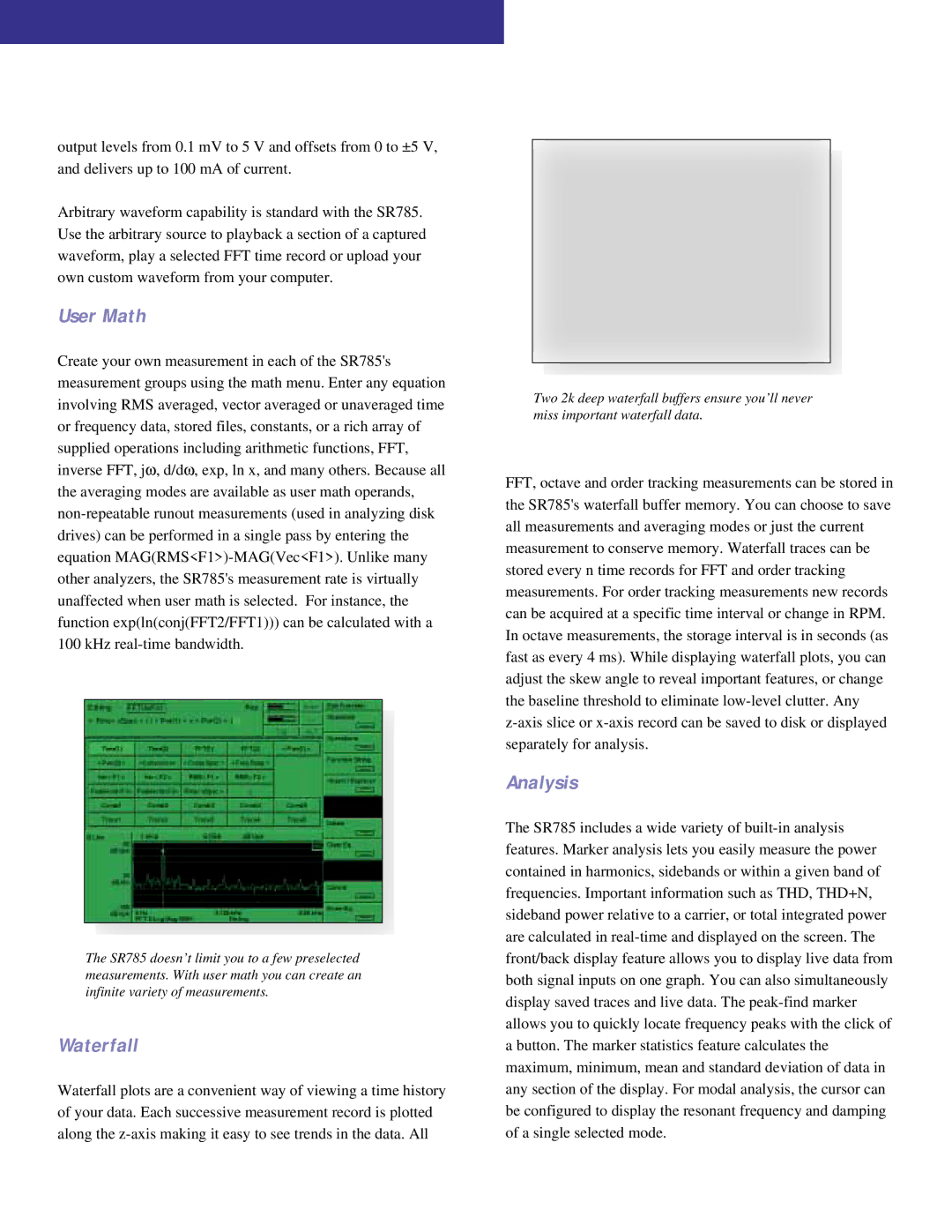SR785 specifications
The SRS Labs SR785 is a powerful and versatile audio analysis tool designed for audio engineers, researchers, and manufacturers. This instrument is renowned for its ability to perform a wide array of measurements, making it an essential asset for anyone involved in audio testing and development. With its cutting-edge features and technologies, the SR785 stands out in the competitive field of audio analysis.One of the main features of the SR785 is its dual-channel capability, which allows users to analyze both input and output signals simultaneously. This is particularly useful for applications such as loudspeaker testing, where comparing the input signal against the output can provide valuable insights into the performance and fidelity of audio systems. The device supports a wide dynamic range and can capture audio signals from an impressive range of frequencies, ensuring accurate representations of even the most nuanced sounds.
The SR785 employs state-of-the-art Fast Fourier Transform (FFT) technology, enabling users to switch between time-domain and frequency-domain analysis with ease. This flexibility allows engineers to tailor their measurements based on specific requirements, whether they are evaluating distortion levels, frequency response, or impulse response. The instrument’s high-resolution display provides clear visual representations of the analyzed data, making it easier to identify trends and anomalies.
Another notable feature of the SR785 is its built-in automation capabilities. This technology allows for automated testing sequences, streamlining the analysis process and reducing the potential for human error. Users can pre-program a series of tests to run automatically, ensuring consistency in measurements and saving valuable time during testing and analysis.
Additionally, the SR785 offers extensive data storage options, allowing users to save measurement results for future reference or comparison. This is particularly beneficial for long-term studies or for manufacturers conducting quality control checks on production lines. The device is also equipped with a range of connectivity options, including USB and GPIB, facilitating easy integration into existing test setups and enhancing its versatility.
The combination of advanced features, robust technologies, and user-friendly design makes the SRS Labs SR785 a top choice for audio professionals seeking a reliable and efficient audio analysis solution. Whether for research, development, or quality assurance, the SR785 delivers precise and actionable insights that drive sound performance to new heights.

